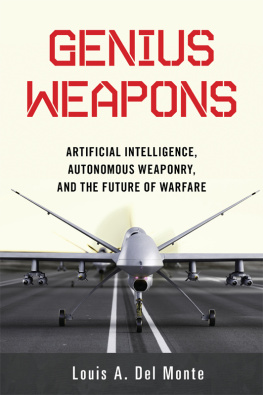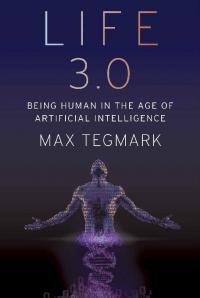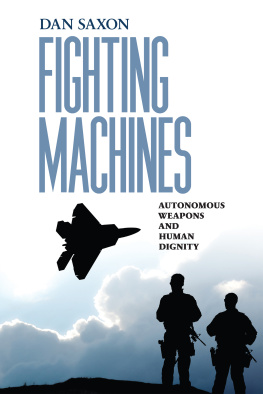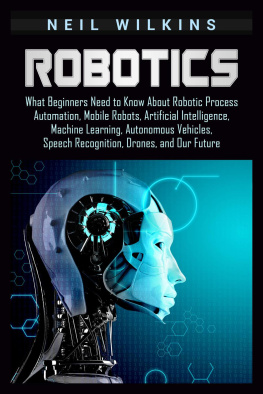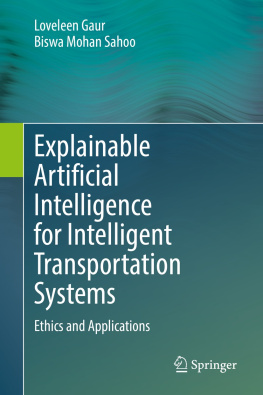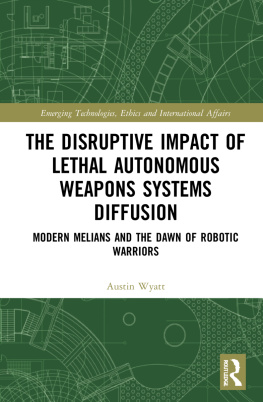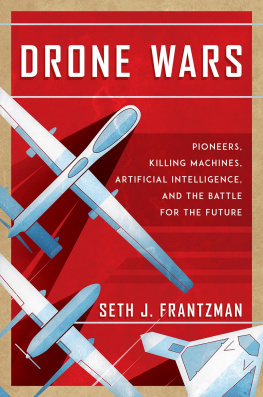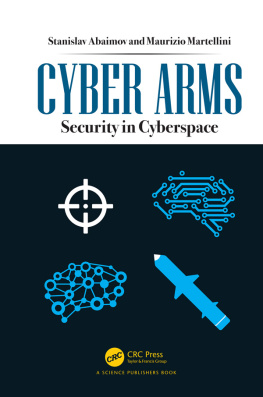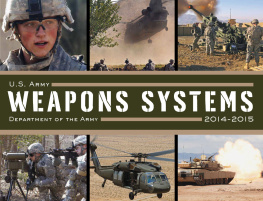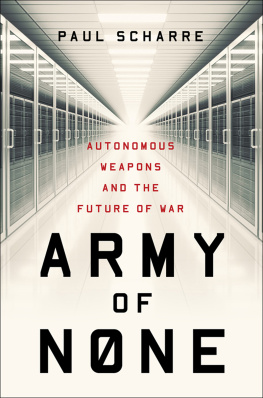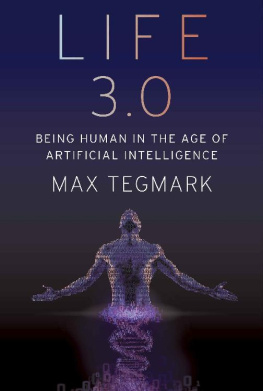
I would like to thank my wife, Diane Cuidera Del Monte, who is the bedrock of our family and an inspiration to all of us. She is the most genuine person I know and our family's moral compass. As is true with all lives, there are hard times, as well as good times. In those hard times, she sees opportunities. There is no box capable of constraining her spirit or imagination. In her own right, she is a professional art teacher and fine artist, having taught art and produced works of art, including sculpture, paintings, etching, and literature. Given her liberal education, she not only is able to discuss and teach art, but is equally capable of editing my works in science. This marks the fifth book she has edited, and all her edits only serve to improve my work. I am indeed fortunate that she said yes to my proposal of marriage fifty years ago. Little did we know the wonderful journey life had in store for us.
I would also like to thank Nick McGuinness, a well-educated dear friend who has the patience to edit each line that I write. Nick McGuinness has rare insight into almost every aspect of society and shares that insight to help me improve my works. He may question an assertion or suggest the need for further explanation. I take his comments seriously. I address them and believe they help produce a better work. I am forever in his debt.
This book would not exist without the enormous help from my agent, Jill Marsal, a founding partner of the Marsal Lyon Literary Agency. Using her deep insight and experience, she has helped shape my book proposals. Widely respected by publishers, she is able to discern the right publisher for each of my works. I feel extremely fortunate to have her represent me.
Lastly, I would like to thank Prometheus Books, a leader in publishing books for the educational, scientific, professional, library, popular, and consumer markets since 1969. After reading my proposal, they had the confidence to publish this work. I am grateful to them for their editorial guidance and their capability as a publisher to bring this book to market.

US Marine Corps Forces, Cyberspace Command, Mission, http://www.candp.marines.mil/Organization/Operating-Forces/US-Marine-Corps-Forces-Cyberspace-Command (accessed July 31, 2018).
MISSION
(1)Commander, Marine Corps Forces Cyberspace Command (COMMARFORCYBERCOM), as the Marine Corps service component commander for the Commander, US Cyber Command (CDRUSCYBERCOM), represents Marine Corps capabilities and interests; advises CDRUSCYBERCOM on the proper employment and support of Marine Corps forces; and coordinates deployment, employment, and redeployment planning and execution of attached forces.
(2)COMMARFORCYBERCOM enables full spectrum cyberspace operations, to include the planning and direction of Marine Corps Enterprise Network Operations (MCEN Ops), defensive cyberspace operations (DCO) in support of Marine Corps, Joint and Coalition Forces, and the planning and, when authorized, direction of offensive cyberspace operations (OCO) in support of Joint and Coalition Forces, in order to enable freedom of action across all warfighting domains and deny the same to adversarial forces.
(3)COMMARFORCYBERCOM has direct operational control of Marine Corps Cyberspace Warfare Group (MCCYWG) and Marine Corps Cyberspace Operations Group (MCCOG) to support mission requirements and tasks. Additionally, the Marine Corps Information Operations Center (MCIOC) will be in direct support of MARFORCYBER for full spectrum cyber operations.
(4)COMMARFORCYBERCOM also serves as Commander, Joint Force Headquarters Cyber (JFHQ-C) / Marines (JFHQ-C/Marines). JFHQ-C/Marines provides support to Combatant Commands for Offensive Cyberspace Operations (OCO) and, when directed, conducts cyberspace operations through attached cyberspace forces. JFHQ-C/Marines is responsible for the command, control, and tactical direction of attached cyberspace forces.
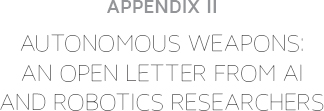
Stuart Russell et al., Autonomous Weapons: An Open Letter from AI & Robotics Researchers, Future of Life Institute, July 28, 2015, https://futureoflife.org/open-letter-autonomous-weapons (accessed July 31, 2018).
Autonomous weapons select and engage targets without human intervention. They might include, for example, armed quadcopters that can search for and eliminate people meeting certain pre-defined criteria, but do not include cruise missiles or remotely piloted drones for which humans make all targeting decisions. Artificial Intelligence (AI) technology has reached a point where the deployment of such systems ispractically if not legallyfeasible within years, not decades, and the stakes are high: autonomous weapons have been described as the third revolution in warfare, after gunpowder and nuclear arms.
Many arguments have been made for and against autonomous weapons, for example that replacing human soldiers by machines is good by reducing casualties for the owner but bad by thereby lowering the threshold for going to battle. The key question for humanity today is whether to start a global AI arms race or to prevent it from starting. If any major military power pushes ahead with AI weapon development, a global arms race is virtually inevitable, and the endpoint of this technological trajectory is obvious: autonomous weapons will become the Kalashnikovs of tomorrow. Unlike nuclear weapons, they require no costly or hard-to-obtain raw materials, so they will become ubiquitous and cheap for all significant military powers to mass-produce. It will only be a matter of time until they appear on the black market and in the hands of terrorists, dictators wishing to better control their populace, warlords wishing to perpetrate ethnic cleansing, etc. Autonomous weapons are ideal for tasks such as assassinations, destabilizing nations, subduing populations and selectively killing a particular ethnic group. We therefore believe that a military AI arms race would not be beneficial for humanity. There are many ways in which AI can make battlefields safer for humans, especially civilians, without creating new tools for killing people.
Just as most chemists and biologists have no interest in building chemical or biological weapons, most AI researchers have no interest in building AI weaponsand do not want others to tarnish their field by doing so, potentially creating a major public backlash against AI that curtails its future societal benefits. Indeed, chemists and biologists have broadly supported international agreements that have successfully prohibited chemical and biological weapons, just as most physicists supported the treaties banning space-based nuclear weapons and blinding laser weapons.
In summary, we believe that AI has great potential to benefit humanity in many ways, and that the goal of the field should be to do so. Starting a military AI arms race is a bad idea, and should be prevented by a ban on offensive autonomous weapons beyond meaningful human control.
[Note: If you wish to sign this open letter, you can do so at: https://futureoflife.org/open-letter-autonomous-weapons.]

Barrat, James. Our Final Invention: Artificial Intelligence and the End of the Human Era. New York: Thomas Dunne Books, 2013.
Bostrom, Nick. Superintelligence: Paths, Dangers, Strategies.
Next page
